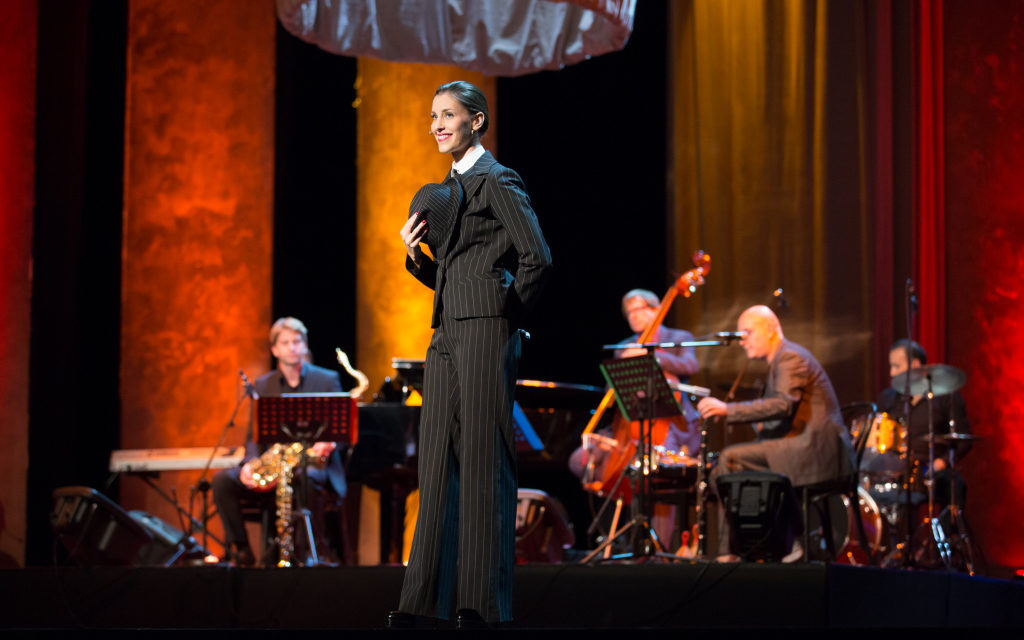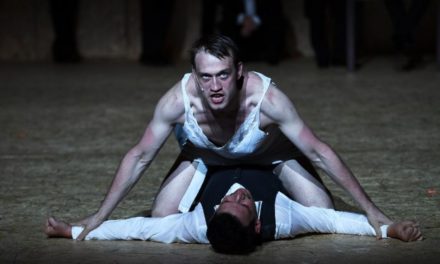Now in its 7th year, SiGledal is the only Slovenian theatre web portal that provides information about the performing arts. Managed by Institute Novi ZATO, its creators are Samo M. Strelec, Tamara Matevc and Gregor Matevc.
Website SiGledal, which this year celebrated its seventh anniversary, is the only portal in the country that offers its visitors complete and free access to all kinds of information involving Slovene performing arts. Its content is aimed at a diverse range of visitors, from creators, theatre-makers, researchers, theatregoers. It not only provides day-to-day updated content for events, festivals and premiers, but with its content also serves as an archive of Slovene theatre heritage.
Launched on Slovene Cultural Holiday in 2007 and managed by Institute Novi ZATO., its creators Samo M. Strelec, Tamara Matevc and Gregor Matevc started first with a group of volunteers that helped keep it alive through a period of three years based solely on their enthusiastic energy. After that, it was finally co-financed by the Ministry of Culture as a public information program and it stays so to this day.
The portal is divided into four segments: Info Point, Wiki, Repertoire, and Digital Collections.
Info point is the most vibrant segment, with its daily updates of recent activity on the field of theatre production, dance, performance art and festivals. Whether you are looking for information on which Slovene theatres are currently performing abroad or which theatre makers were recently awarded, or you happen to be a young aspiring actor, looking for open auditions, you will find what you are looking for and much more.
The second segment is called Wiki and is a theatre Wikipedia built by theatre-makers, researchers and the audiences. Since its beginnings, it keeps on growing and expanding – especially because of the input of website visitors that wish to participate in the making of it. With added videos, photos and links to other important websites and interviews, this SiGledal segment also serves as an effective promotion for theatre creators.
The third segment, Repertoire, is a web yearbook of Slovenian theatre production. It serves as an archive of every professional theatre show of Slovene production since 1857. It is also available in the English language.
The last segment called Digital Collections is publicly accessible digital archives of Slovenian theatre production. That includes reviews, talks, discussions, reverberations, photos, posters, and other materials that provide a glimpse into selected theatre productions, their creation process, reception, collaborators, etc. It started in 2010 with cooperation from the National Theatre Museum of Slovenia which helped with the digitalization of all the materials connected with the staging of plays of Slovene author, publicist and playwright Rudi Šeligo (1935 – 2004). This digitized items were later also published on Europeana. What followed were differently themed e-exhibitions.
First, two virtual exhibitions launched in 2012, one dedicated to Slovene costume designer Alenka Bartl (in collaboration with the National Theatre Museum of Slovenia) – available also in the English language – and the second one, dedicated to the development which in the 1990s led to the professionalization of theatre in the city of Ptuj. In 2013 SiGledal decided to commemorate the oldest and the most prominent theatre festival in Slovenia, The Maribor Theatre Festival. The e-Exhibition features The 46th Maribor Theatre Festival, especially Igor Samobor, that year’s laureate of the lifetime achievement award the Borštnik Ring, and theatre play “The Storm” (directed by Jernej Lorenci), which was awarded the Maribor Theatre Festival Grand Prix for best production. e-Exhibition, available also in the English language, was realized through cooperation from the Maribor Theatre Festival, the Ljubljana City Theatre, Institute Novi ZATO., the National Theatre Museum of Slovenia and the Slovene National Theatre Drama Ljubljana. The latest addition to Digital Collections is an e-Exhibition entitled Rudi Šeligo, which draws from previously digitalized material and offers a review of his work and contributions to the Slovene theatre through nineteen-seventies till nineteen-nineties.
This post was written by the author in their personal capacity.The opinions expressed in this article are the author’s own and do not reflect the view of The Theatre Times, their staff or collaborators.
This post was written by The Theatre Times.
The views expressed here belong to the author and do not necessarily reflect our views and opinions.


















